Recreating the Country blog |
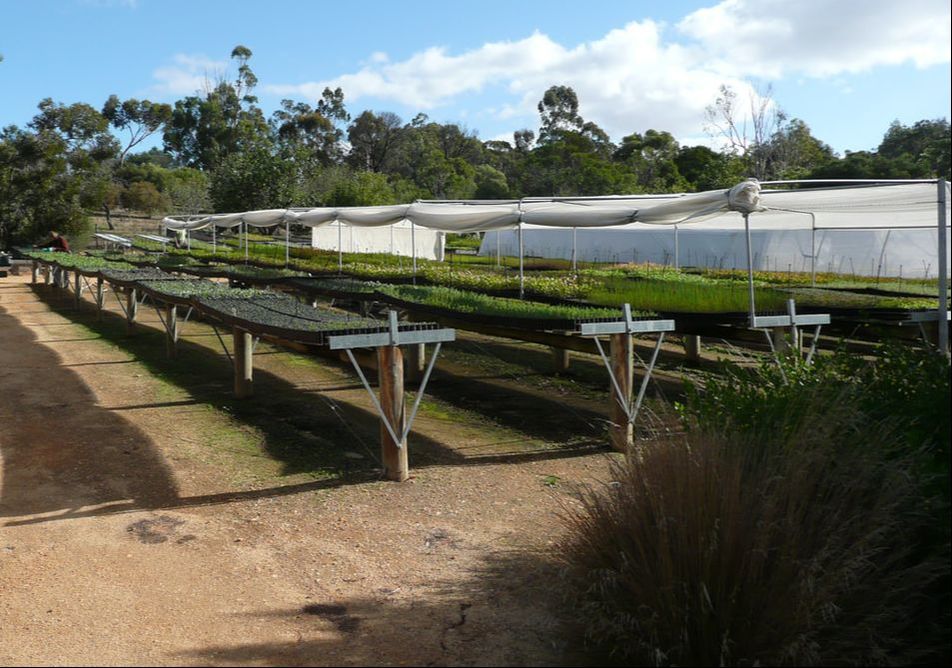 Treehome Nursery in Autumn 2009. The same view taken on November 2018 is shown at the end of this blog Treehome Nursery in Autumn 2009. The same view taken on November 2018 is shown at the end of this blog "Where have all the nurseries gone? Long time passing" In the first three decades of Landcare, small locally based nurseries were important cogs in the indigenous revegetation machinery that put millions of trees back on our rural landscapes. Their contribution to restoring biodiversity, reducing soil erosion and combating dryland salinity on farms was considerable. Sadly in my neck of the woods most small nurseries have closed, leaving only the larger production nurseries, that have little or no local connection, to supply plants for Landcare projects. Small nurseries were often run by one or two people and usually produced up to 150,000 plants in tubes. This was the magic number that provided a viable income for two adults sharing the management and production roles During the thirty years that I was part of the family team that ran Treehome Nursery in Teesdale, Victoria, there were a number of other small nurseries providing similar services. Each of these small nurseries supported a rural landscapes radiating up to 50 km from the nursery premises. Each of these small nurseries had a detailed practical knowledge of their 50km radius patch which greatly enhanced the unique services that they each provided. 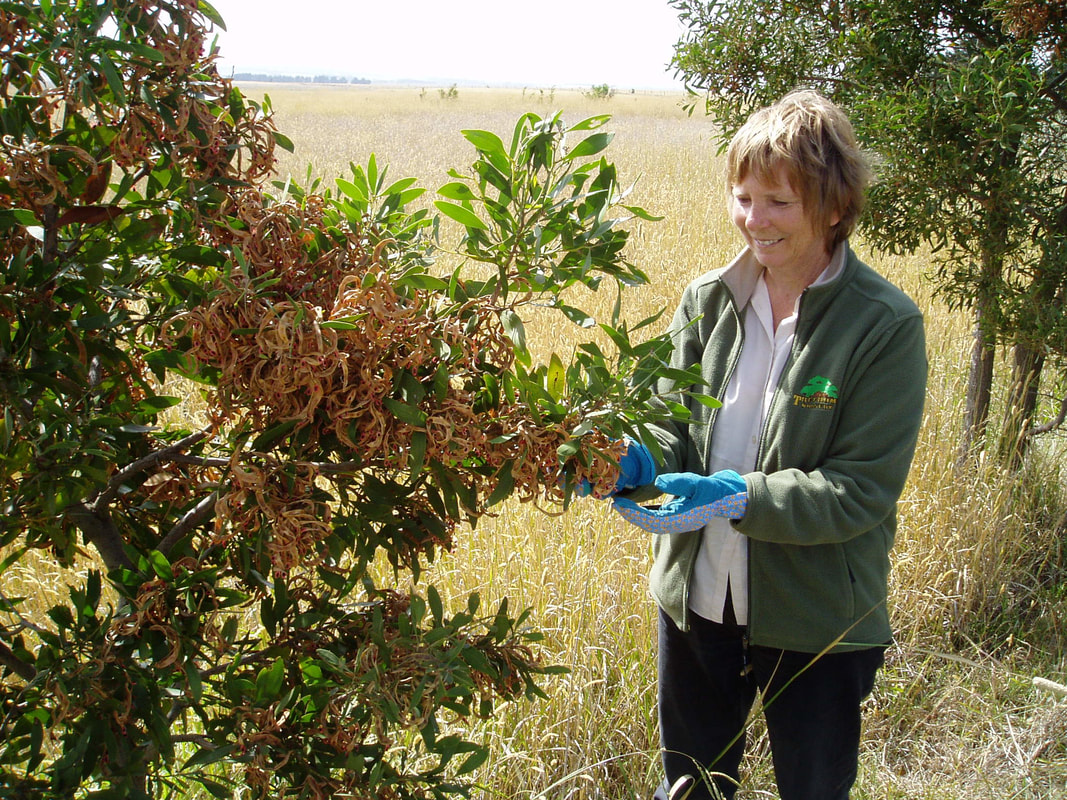 Lina collecting indigenous Blackwood seed Lina collecting indigenous Blackwood seed These unique practical services included. A detailed local knowledge;
Practical advice on site preparation and planting. For example, deep ripping was always recommended in the early years to aid the establishment of trees. Feedback from farmers planting on cracking clay soils made it clear that deep ripping caused problems in these soils. The soil cracked wider along rip lines exposing the roots of young trees. Because of this feedback we discouraged ripping in cracking clay soils. Practical support for Landcare facilitators as well as Local, State and Federal Government field officers. These individuals would change every few years so the local knowledge provided by small nurseries became invaluable to them. Monitoring planting sites to improve local knowledge of plant species performance. This often came as feedback from farmers rather than as a formalised process. These specialist services could only be provided by locally based businesses interested in the people and the place where they lived and worked. 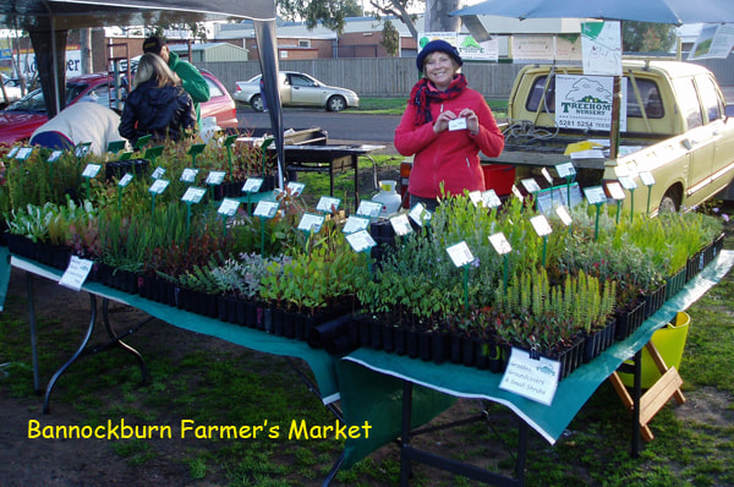 Our nursery only occupied 0.5ha and as a small business we were welcomed into the farming community. When we arrived in Teesdale we were told that it would take over 25 years to become locals. Within three years of opening the nursery we were regularly invited into the cosy kitchens of farming families, a privilege that we valued highly because it made us feel welcome, accepted and valued. Also ours was a family run nursery which was a perfect fit into the farming community who were also mostly family businesses. These close relationships were integral to tailoring the support and advice for farm revegetation projects. I always relied on the commitment and knowledge that each farmer had for their property. It became a team approach with information flowing both ways. In the late 1980’s we were all learning together because the ‘science’ of revegetation was in its infancy. Only a handful of farmers were planting trees at that time and that was mostly for firewood. 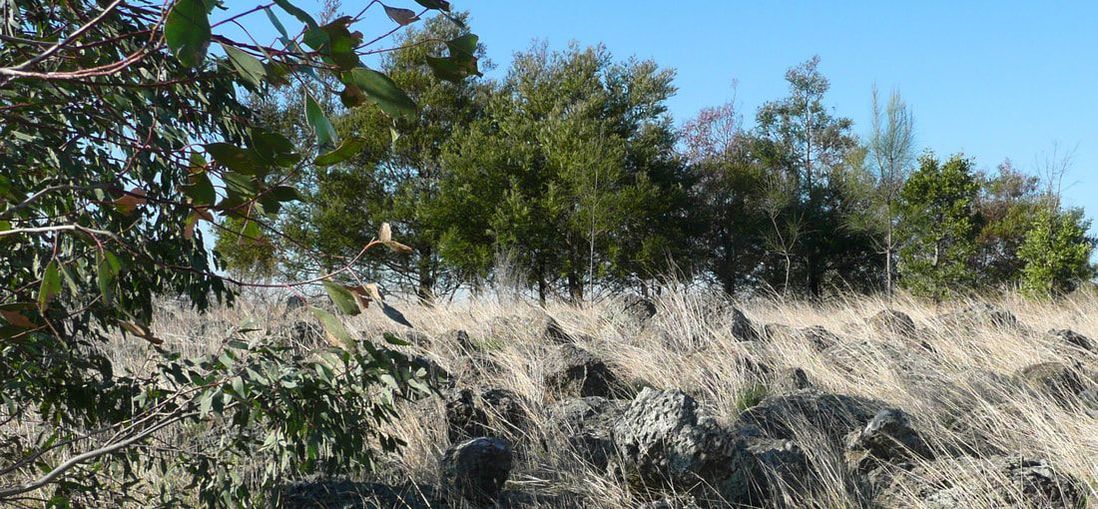 Revegetating a stony barrier near Shelford required an appreciation of the plant species that are suited to the heavy cracking soils of the basalt plains Revegetating a stony barrier near Shelford required an appreciation of the plant species that are suited to the heavy cracking soils of the basalt plains However there were some remarkable pioneer farmers that ignored the popularly held belief in the 1980’s that trees had no place on a farm because they competed with crops and pasture. These farmers have become legendary because they were fearless advocates for a different way of farming which enhances the local ecology. I had the good fortune to work with a number of these remarkable innovative thinkers and they inspired me to think differently about trees on farms. This was another exciting benefit of being a small nursery with an embryonic philosophy in an evolving world of new ideas. The establishing of our nursery and many other small nurseries coincided with the emergence of Landcare in Victoria. Through this great organisation I found another network of people committed to repairing a damaged rural environment. There was a general sense of optimism and the naïve belief that the problems of erosion, dry land salinity, wind exposure and loss of biodiversity could be quickly turned around by planting trees. Thirty three years on we know trees are playing an important role in repairing Australia’s rural environment though the restoring biodiversity challenge is far more of a marathon than a sprint. 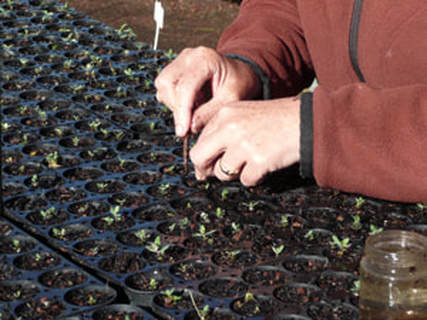 ...the sometimes tedious daily routine of planting thousands of small seedlings ...the sometimes tedious daily routine of planting thousands of small seedlings Running a small Landcare nursery it helps to have a commitment to improving the local environment as well as an openness to never stop learning. Every person who came into our nursery taught me something of value. It also helps to have a patient almost meditative attitude to the sometimes tedious daily routine of planting thousands of small seedlings. This we overcame with a thankfully endless stream of talking books from the Geelong Library 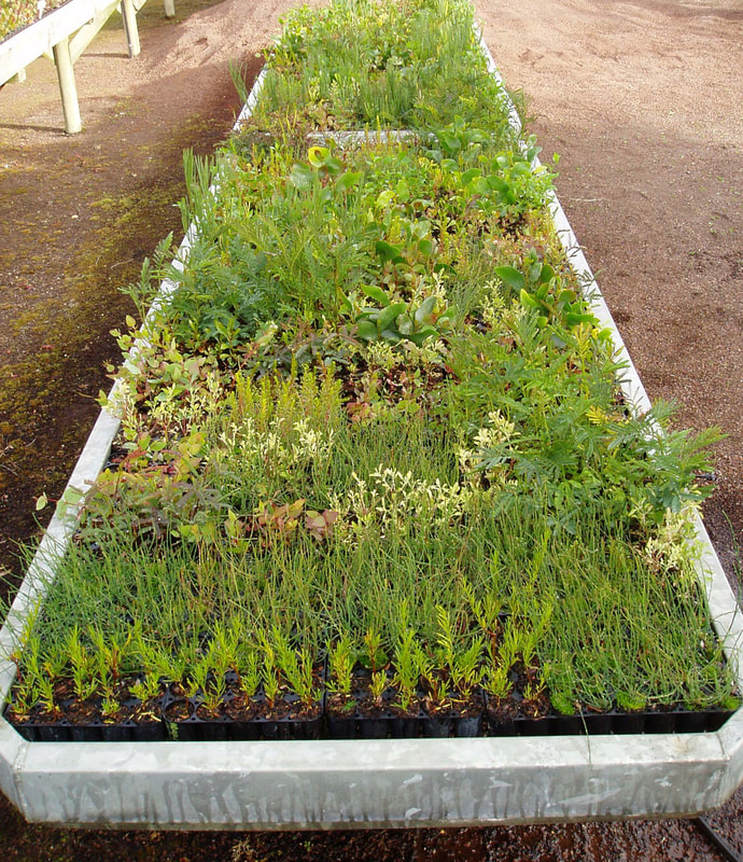 Each species having a different leaf colour and shape giving the nursery benches the ambiance of a lush mosaic raised garden. Each species having a different leaf colour and shape giving the nursery benches the ambiance of a lush mosaic raised garden. Yet the rewards for this patient dedication were huge, like the spectacular autumns when the nursery was full of healthy young plants. Each species having a different leaf colour and shape giving the nursery benches the ambiance of lush mosaic raised gardens. The like minded people that we met every day, many of whom become friends, were our community as well as our information network. The benefits of being part of a network of genuine committed people are immeasurable. We had hoped that Treehome Nursery would continue to support the local Landcare community for many years to come as it had under our stewardship for thirty years. Regrettably, the new owners closed its gates for the last time on November 15th 2018. I hope there are other young families out there with the optimism and long term commitment to the environment needed to fill this vacuum Sadly the haunting words of American songwriter Pete Seeger in his song ‘where have all the flowers gone’ could be speaking about the demise of small nurseries; "Where have all the nurseries gone? Long time passing Where have all the nurseries gone? Long time ago"
5 Comments
6/5/2019 09:46:31 pm
Good article & excellent way to articulate. Keep it up.
Reply
John Lawrie
6/10/2019 01:38:10 pm
Hi Steve and Lina,
Reply
Steve
6/10/2019 10:29:59 pm
Hi John, what a surprise!!
Reply
Jantte Mohr
23/4/2022 11:51:06 am
I bought from you, your advice and friendliness were/are next to none. I am on 200acres & want to return mire to local indigenous plants along the Moorabool River. Are you able to suggest where I can get local indigenous plants for my increasing reforestation. It's a slow process. Thankyou for your passion & your book Steve. All the best. Kind Regards Janette
Reply
Steve
24/4/2022 03:46:37 pm
Hi Janette,
Reply
Leave a Reply. |
Click on the image below to discover 'Recreating the Country' the book.
Stephen Murphy is an author, an ecologist and a nurseryman. He has been a designer of natural landscapes for over 30 years. He loves the bush, supports Landcare and is a volunteer helping to conserve local reserves.
He continues to write about ecology, natural history and sustainable biorich landscape design. 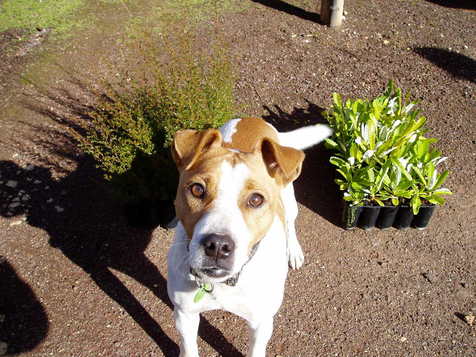
|
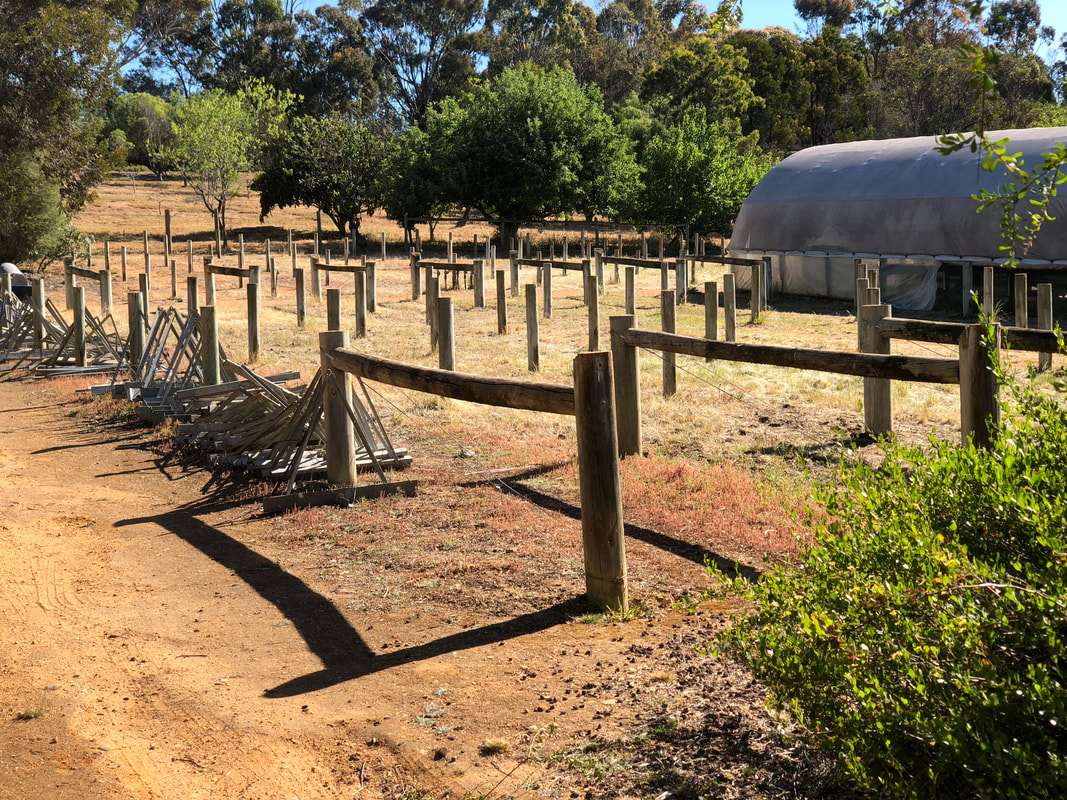
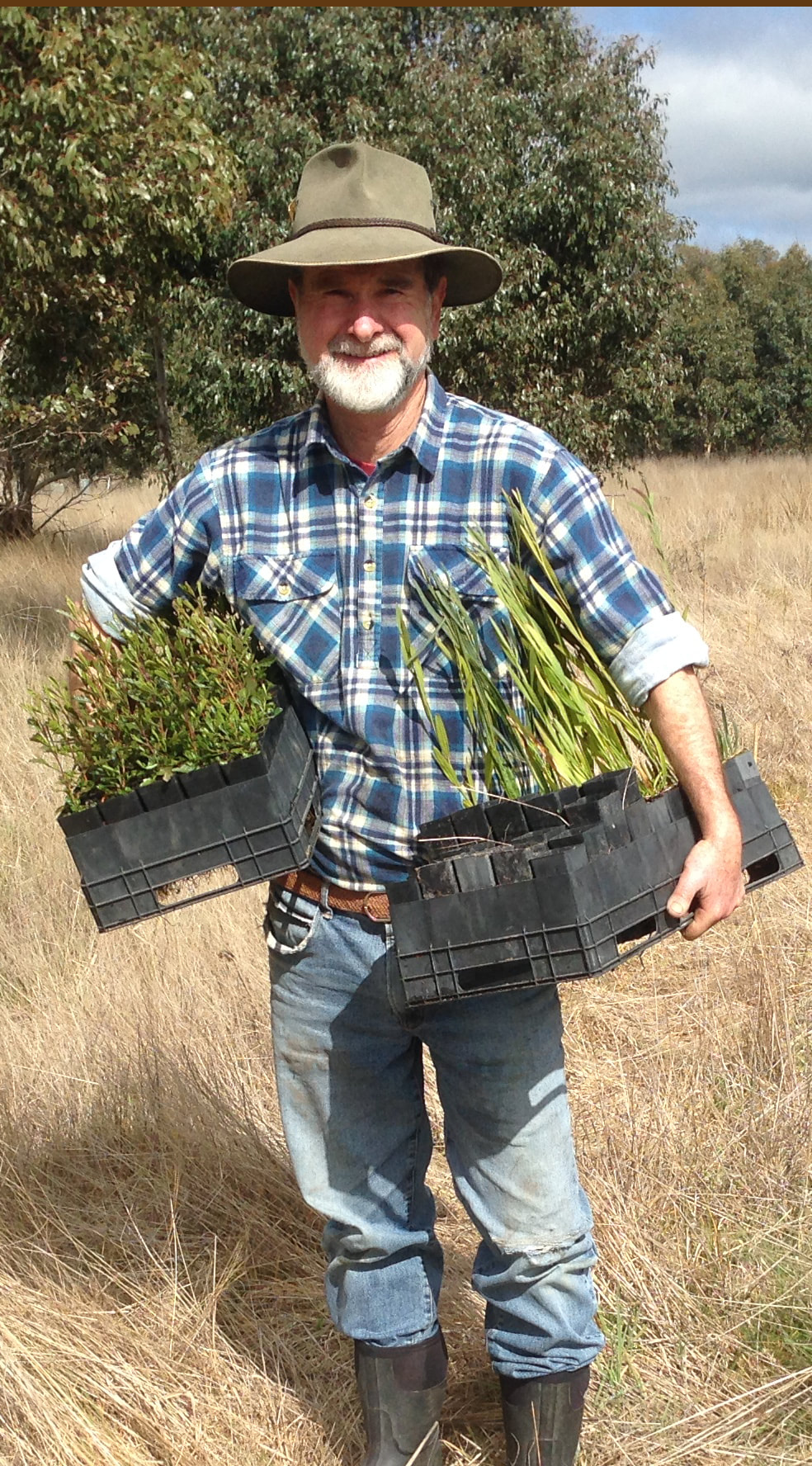

 RSS Feed
RSS Feed
